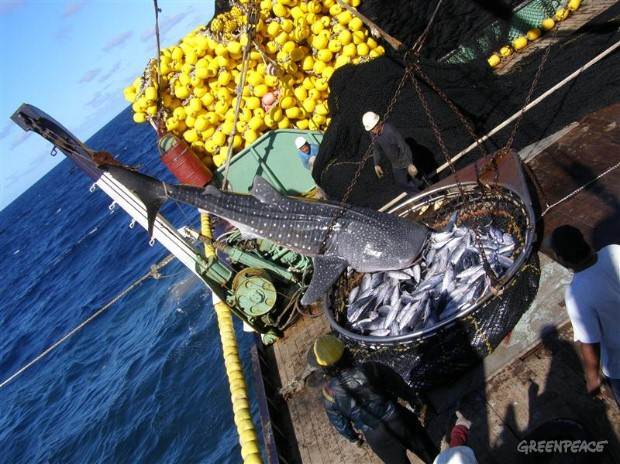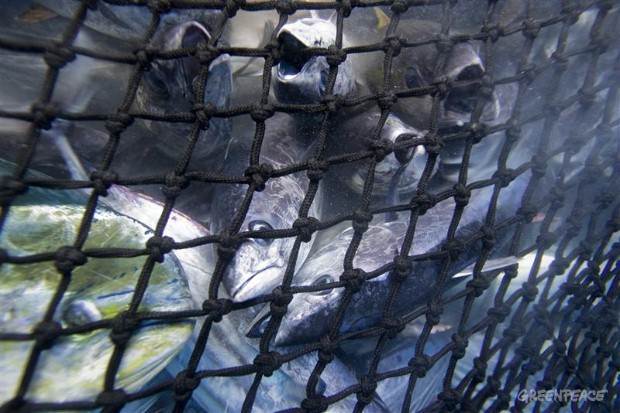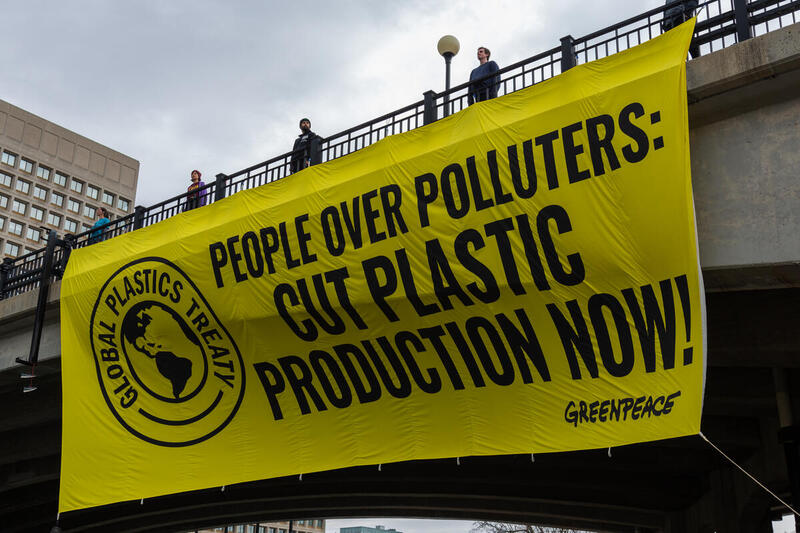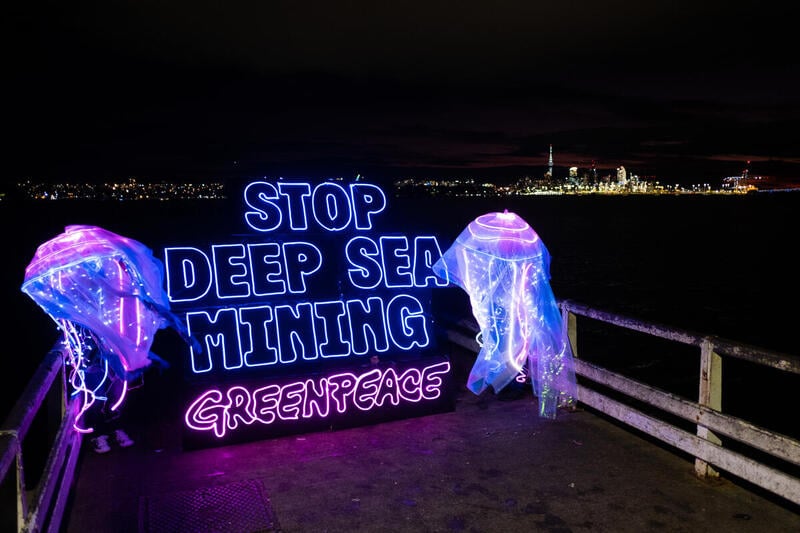
You know that can of tuna you drop into your supermarket basket every week? Ever wonder what’s in it? Probably not but you might be thinking twice from now on, once you see the results of a recent Greenpeace commissioned study.
Much canned tuna sold around the globe just says “tuna” on the label. Sometimes they try to get a little more specific by calling it “chunk light” or “flaked light” tuna but the industry has taken for granted that few people have asked the question- what kind of tuna is light tuna anyway? Most people don’t realize that there are many types of tuna that could be in that can and some of those tuna species could be overfished, destructively fished, mislabelled as something it’s not, or even be stolen from people that rely on it for their primary source of protein. That’s why Greenpeace recently commissioned the first ever independent, public genetic tests into tinned tuna, to find out what was really going on inside 50 brands of tinned tuna. Analysis of products from 12 countries, including the US, Canada, Australia, and several European countries, turned up some pretty dodgy things.
Inside some cans (brands Calvo, Campos in Spain), two different species of tuna were found, while in others (for example Clover Leaf brand sold here in Canada and Nostromo [owned by Calvo] in Italy), different cans of the same product were found to contain different species. This was detected in both cans from the same batch*, as well as in cans from different batches. Tuna species can be hard to differentiate which can lead to usage of different species in a single and various batches. Compound this with poor labelling and it is impossible for consumers to know what to expect in their tuna can. But does Clover Leaf even know what it’s selling? It would appear from its website that preaches such a commitment to ensuring sustainable tuna, that it, in fact, doesn’t. There is no mention of bigeye being sold by the company anywhere to be found, but in their website’s sustainability section, it does present a stock status rating of orange, suggesting it is of concern. So, whether Clover Leaf is as in the dark as the consumer, trying to keep the true contents of its cans secret or are just simply failing to practice what they preach, remains a mystery, but either way, none of those answers are good enough.
The canned tuna industry, through what appears to be lazy disregard for both its customers and future tuna availability, is not only deceiving consumers but implicating retailers in a trail of destruction. It starts with a FAD, or a fish aggregation device– which is an object placed in the water to attract fish. FADs allow the fishing industry to catch a lot of tuna at one time, but more than just the desired catch is attracted to the floating object in an otherwise open ocean.
Turtles, sharks, and juveniles of species under pressure like yellowfin tuna and bigeye tuna are caught in the same nets, often thrown back into the ocean dead or dying and threatening the survival of these species. When the juvenile tuna that are caught are sent ashore for processing and frozen, identification and sorting is apparently very difficult, resulting in species being mixed in the tinning process. Or, it may just be a case of the tuna industry lacking financial incentive to separate the species. Whatever the reason, the problem keeps coming back to FADs. By using these fish-attractors in tandem with purse seine nets, the tuna industry is destroying its own future and pushing towards the collapse of tuna stocks. By catching small, young fish, it’s ensuring that there will be fewer large tuna in the future.

Greenpeace is calling for a ban on FADs in purse seining – we want them banned from use in tuna fisheries throughout our oceans. Not employing these devices would help minimize the bycatch of other animals, as well as drastically reduce the amount of juvenile tuna ending up in cans.
However, until the tuna industry and retailers sourcing tuna ensure their tuna is FAD free, if you’re finding it is tasting a little extra fishy one day, it is likely because you’re getting something you hadn’t expected and it isn’t a dash of lemon.
To help support a ban we need to take action in the supermarkets. Consumers don’t want dodgy tuna, and neither do retailers. Every industry fears the wrath of consumer opinion- so voice yours to the tuna industry and tell it to clean up its act! Look at the contact information on the side of your can and give them a ring. Do they even know what they’re selling?
**A batch (also ‘charge’ or ‘lot’) describes the entity of all units of a product that were produced or packaged under the same conditions. A batch number is a number that allows the identification of the specific batch this product was part of.
Sarah King is an oceans campaigner for Greenpeace Canada working in Vancouver.




Discussion
This is disturbing. I thought I loved Tuna. Thanks for the info.